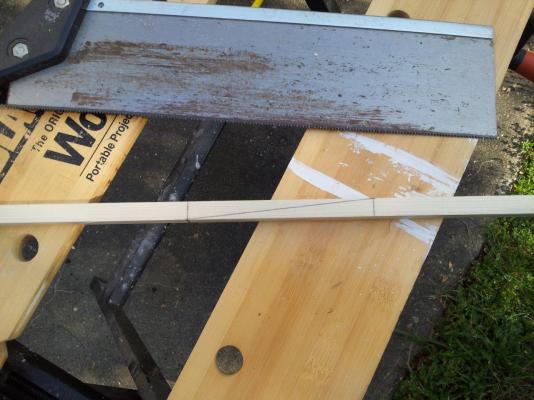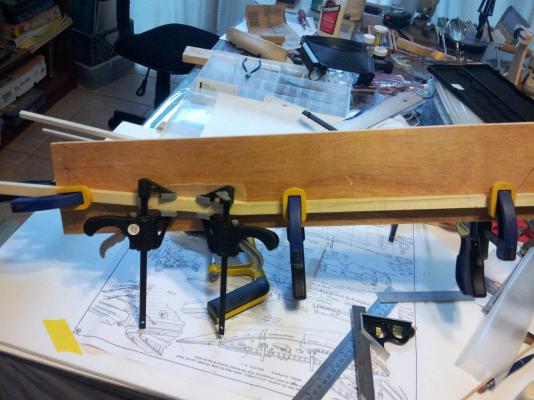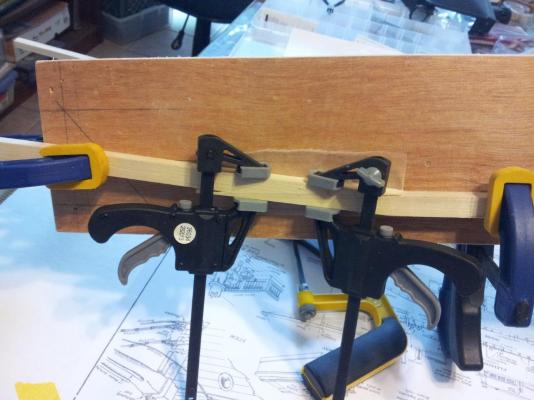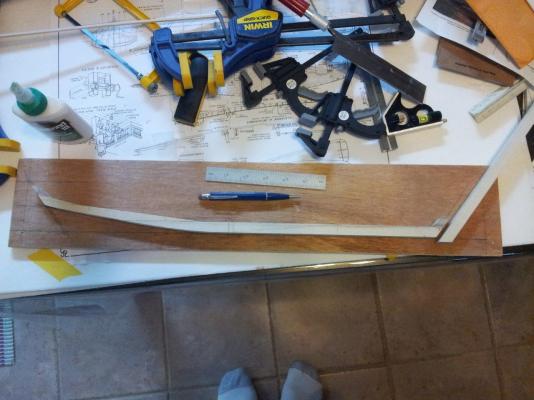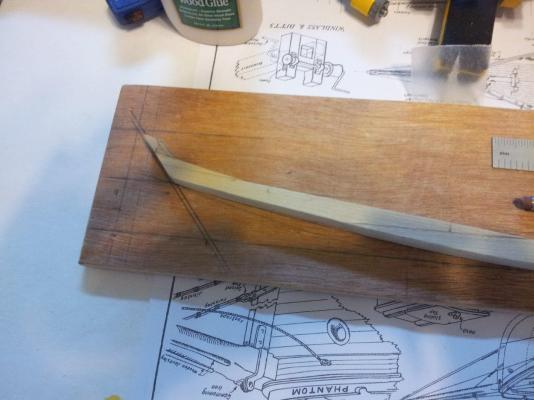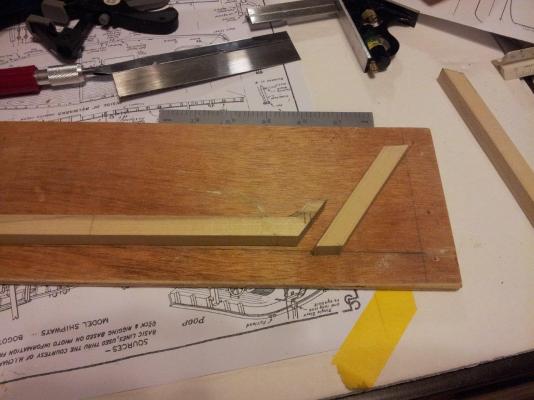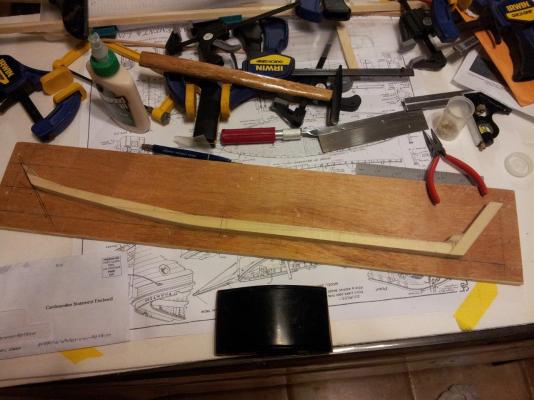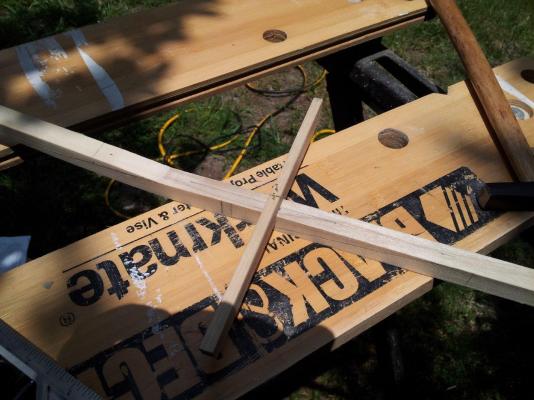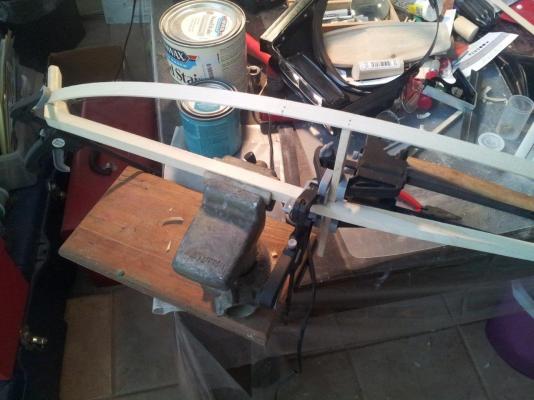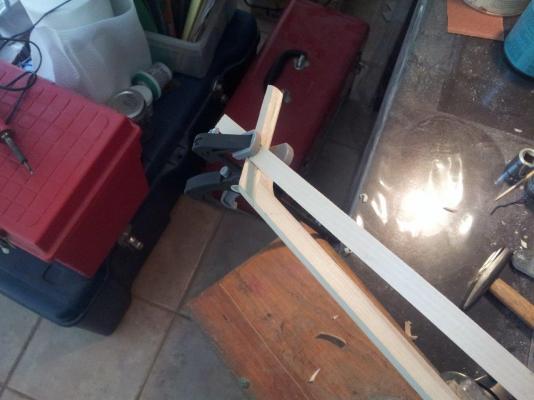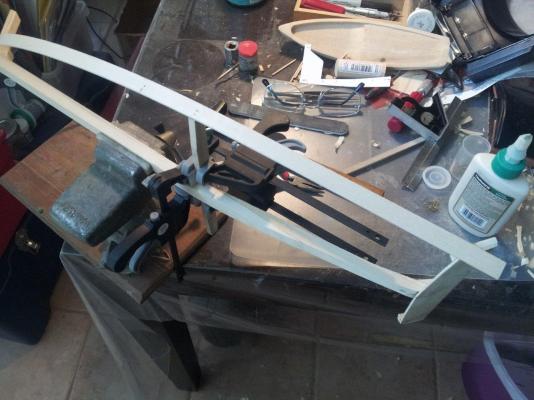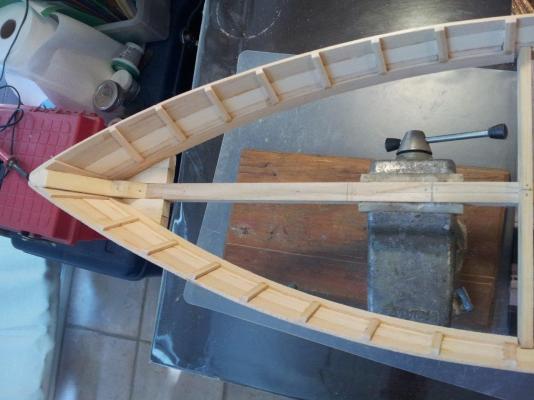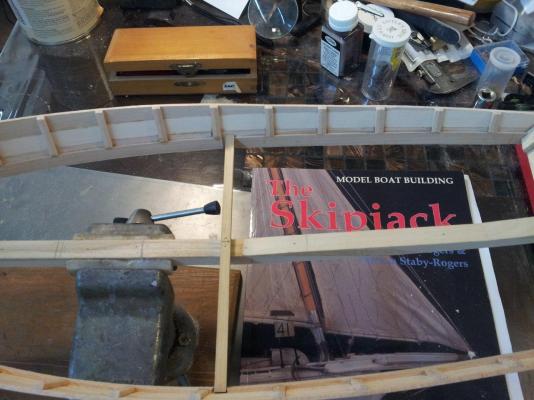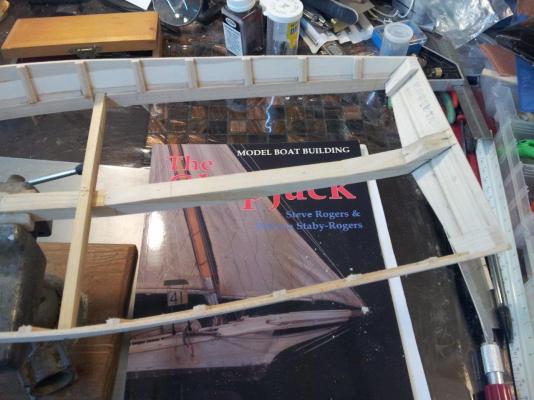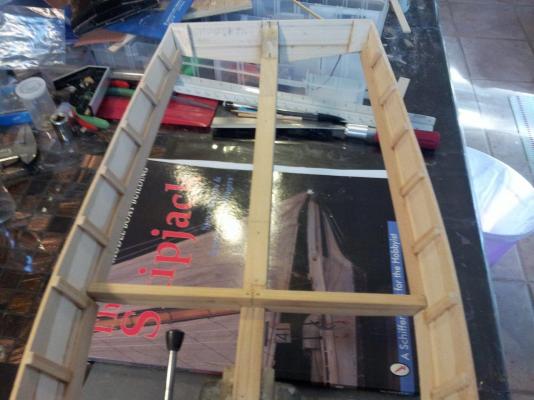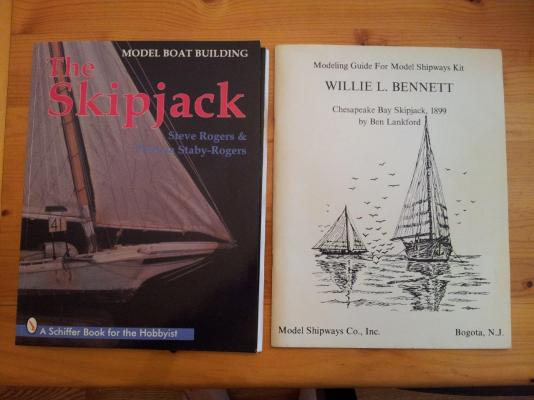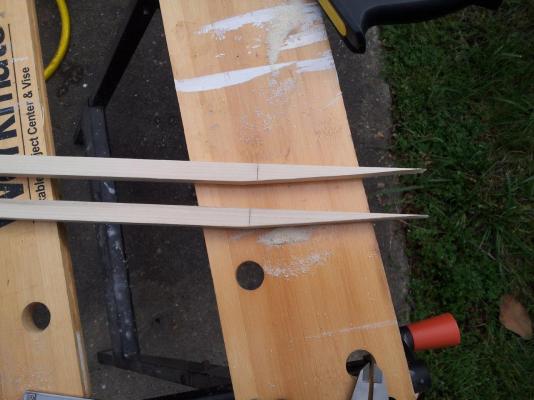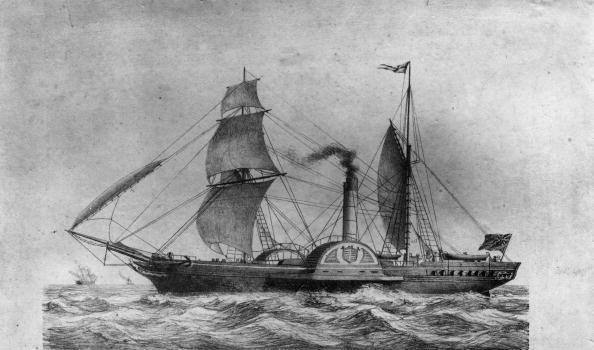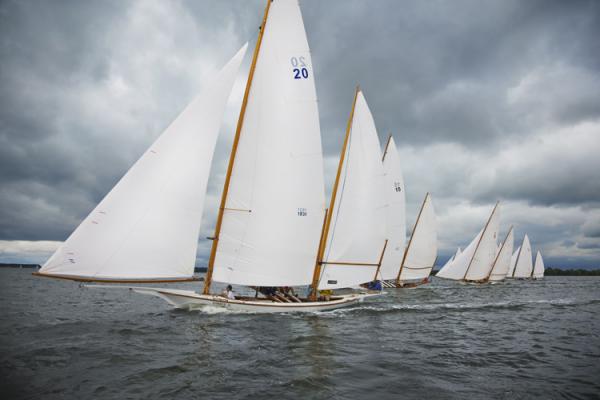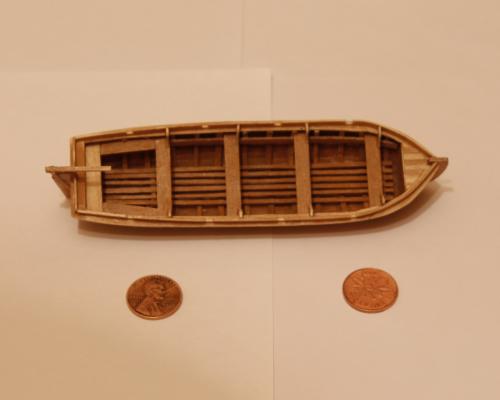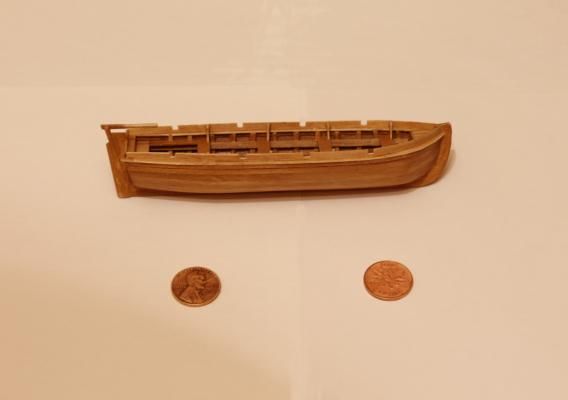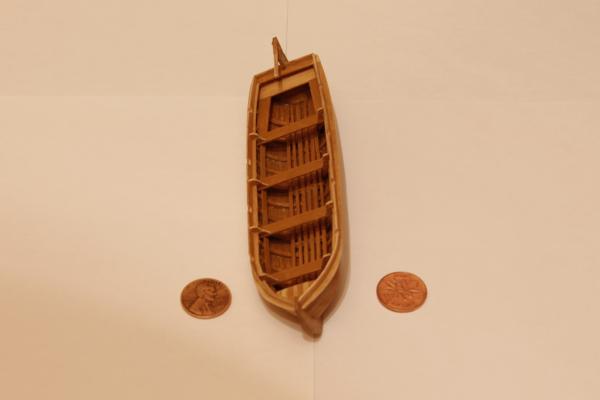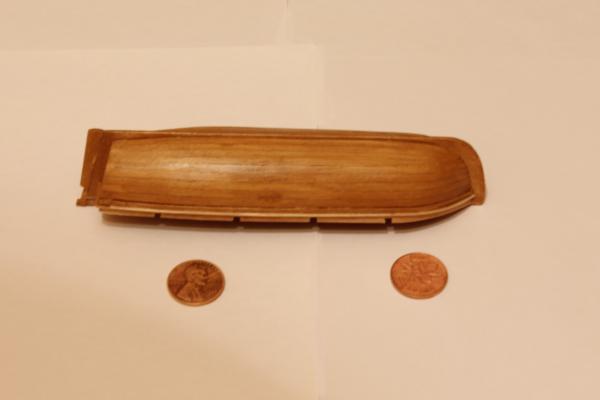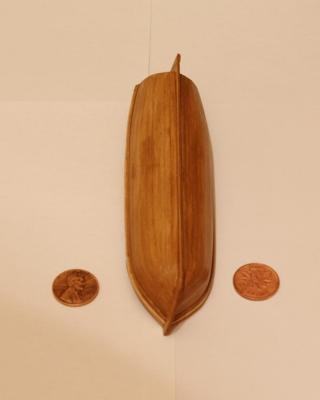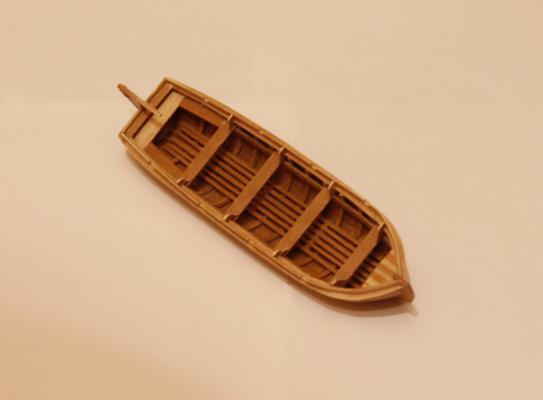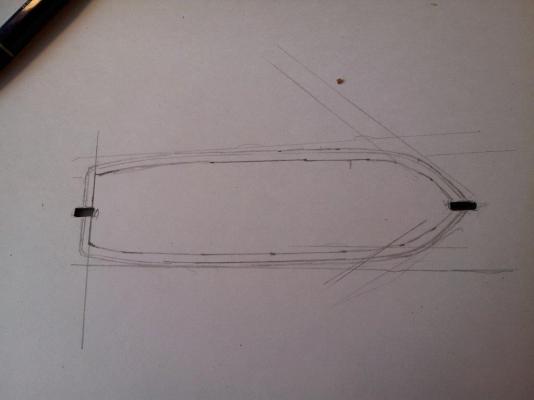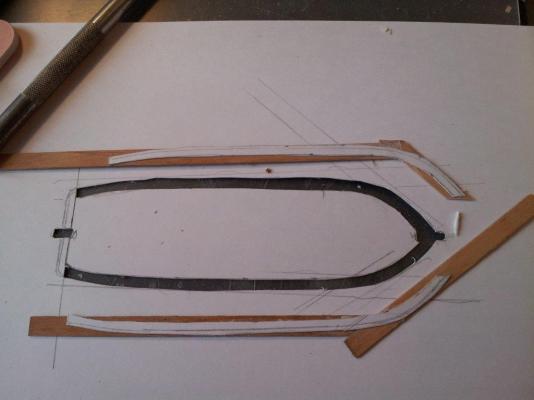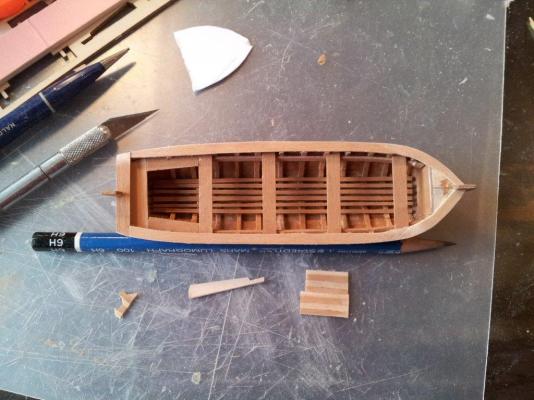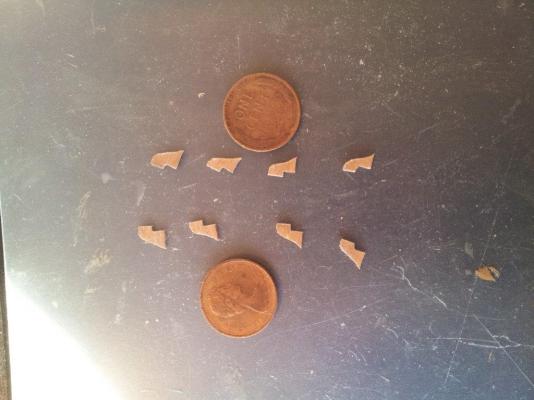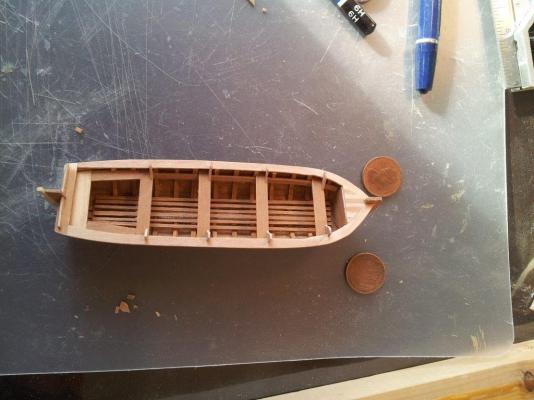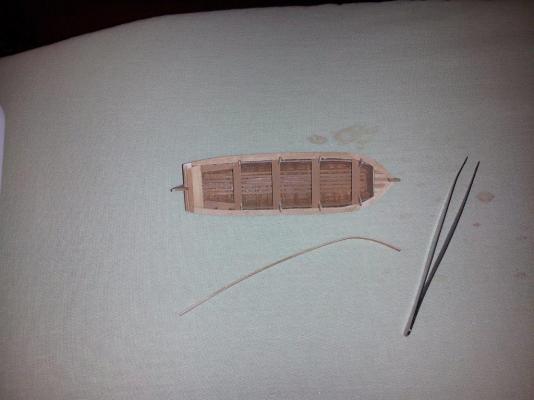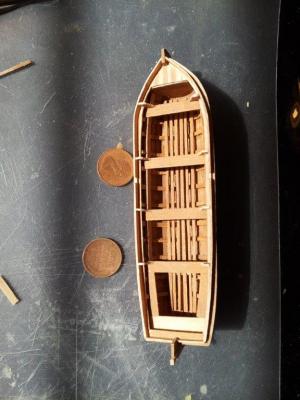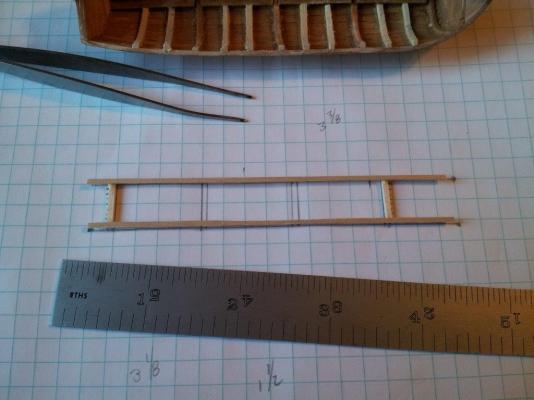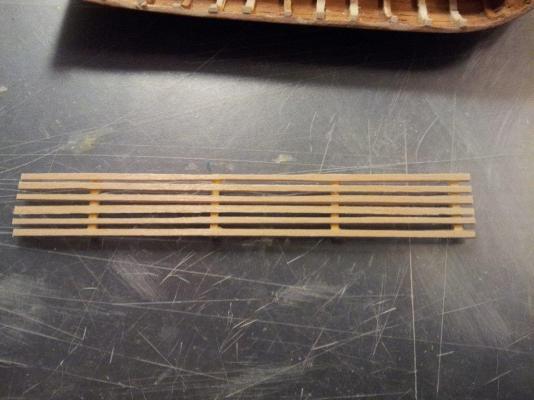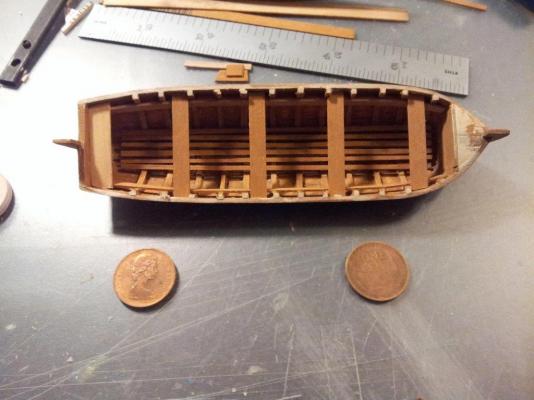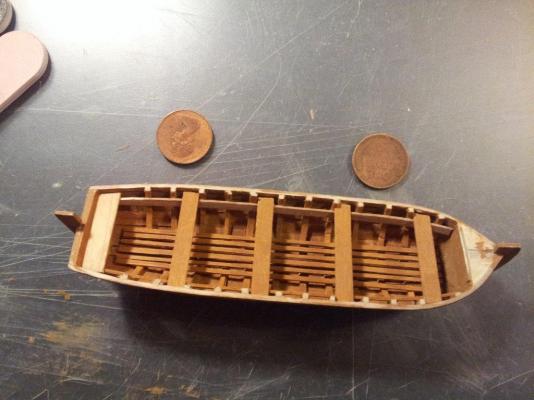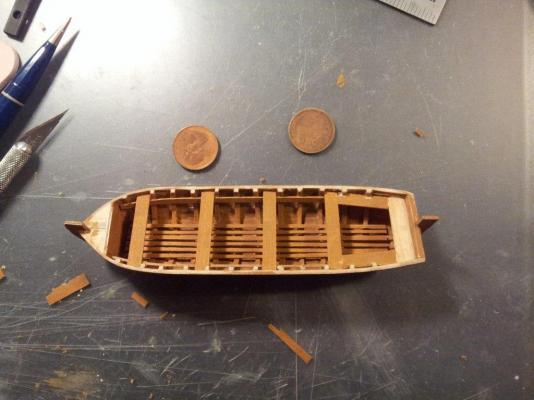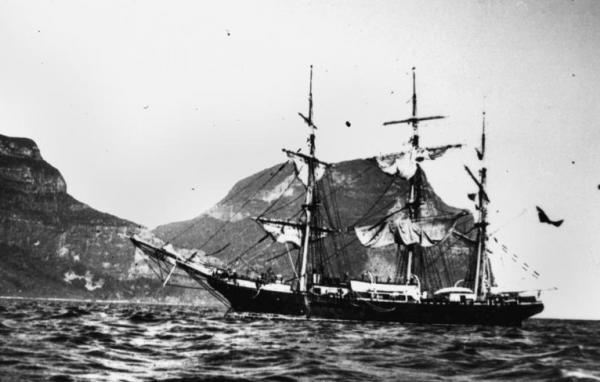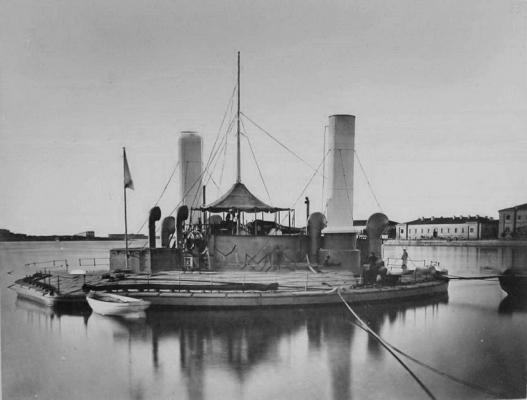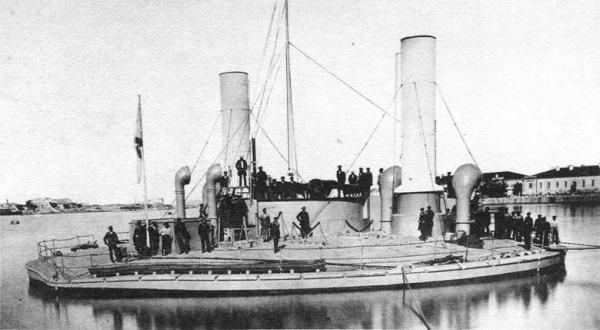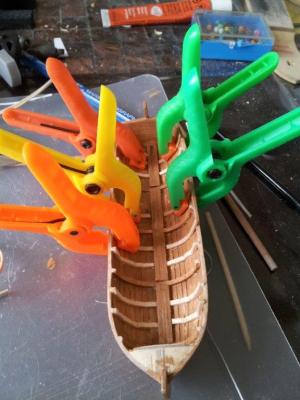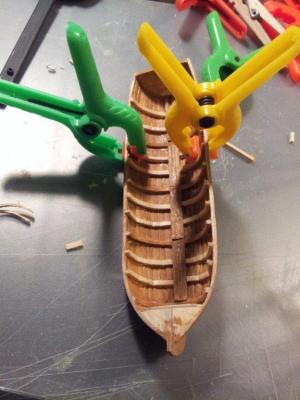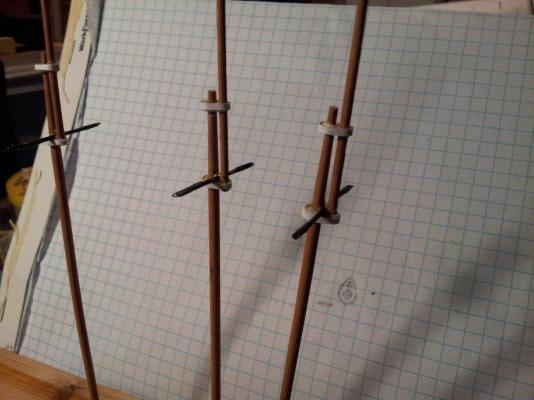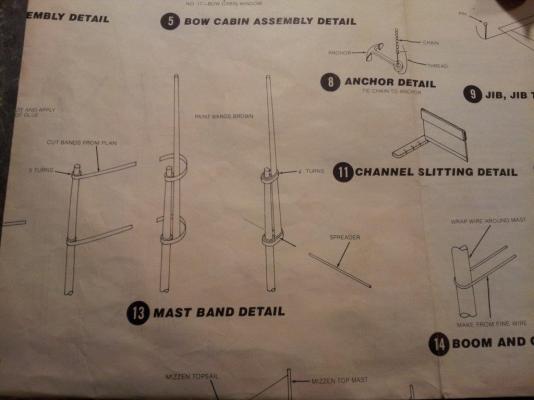-
Posts
214 -
Joined
-
Last visited
Content Type
Profiles
Forums
Gallery
Events
Everything posted by KevinR
-
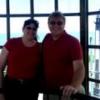
Skipjack by KevinR - 1:24 - abandoned
KevinR replied to KevinR's topic in - Build logs for subjects built 1901 - Present Day
Thanks, for all of the comments. The Chesapeake workboats are some of my favorites. During Oyster and crab season I see several of the Chesapeake Bay Deadrises on my way to work. I think it says a lot about a wooden boat type that is still being constructed today. The same construction method that was used to build Skipjacks is used to build the Deadrise workboats. I am leaving for Texas and Louisiana to attend a family reunion. Sorry, I will not have any updates for a couple of weeks. I will be logging on occasionally to check on other member's build logs. -
The skipjack is a traditional fishing boat used on Chesapeake Bay for oyster dredging. Skipjacks vary in size, usually 40 – 60 feet in length. They were not built from plans. Almost every dimension of the hull and rig is a ratio of the length of the hull. Several weeks back, my wife and I went to the Reedvillle Fisherman's Museum in Reedville Virginia. They have a skipjack, Claud W. Somers, a deck boat, Elva C., a replica of Captain John Smith's barge (circa 1608) and what remains of a Chesapeake Bay Log Canoe. It is a small museum with lots of models, model train layout and a boat yard. While perusing the gift shop I came across Steve Rogers, Patricia Staby-Rogers book “Model Boat Building: The Skipjack” and bought it. I was already working on MS Phantom, but I kept going back to this book. So here is my build log for a 45ft skipjack. This is my first scratch build model. My primary source is the book “Model Boat Building: The Skipjack”. For reference and additional information I am using the plans for the MS Willie Bennett, Ben Lankford's book “Modeling Guide for Model Shipways Kit willie L. Bennett” and a spreadsheet I found on line at http://msuweb.montclair.edu/~lebelp/Miscellany.html. The spreadsheet has the dimensions ratios used to build skipjacks and has come in very handy. “Model Boat Building: The Skipjack” talks about the ratios that are used to calculate the skipjack dimensions, but no where in the book are they listed. The books I am using for reference. Cutting the keelson. Gluing the keelson. Adding the stemliner and the transom. Attaching the strongback. The strongback is nailed in place and will be removed after the bottom planking is completed. There was no specific location given for the strongback so the placement was based on the Willie Bennett plans. Adding the first plank. This is where you determine the shape of the hull. The side planking completed. Edited to add links
-
Captain Slog, You are Correct!! From Wikipedia: "The Sirius was a side-wheel wooden-hulled steamship built in 1837 for the London-Cork route operated by the Saint George Steam Packet Company.[1][2] The next year, she opened transatlantic steam passenger service when she was chartered for two voyages by the British and American Steam Navigation Company.[3] By arriving in New York a day ahead of the Great Western, she is usually listed as the first holder of the Blue Riband, although the term was not used until decades later." http://en.wikipedia.org/wiki/SS_Sirius_%281837%29 Well Done! Captain it is your turn.
-
Someone make a guess before I forget what ship it is!
-
Sorry everyone for the delay. With the warm weather, I have been busy catching up with chores around the house. Here is the selection. What Ship is this?
-
USRC Colfax Colfax, commissioned in 1871, was a 140-foot, 250-ton, side paddlewheel steamer. She was built with a composite hull (iron frames planked with wood) by Dialogue and Wood of Camden, NJ. She spent her career in the waters of the southeast coast, from Baltimore to Savannah. She enforced quarantine restrictions at Fort Monroe in 1893, operated with the USS Vesuvius, the Navy's unique dynamite gun cruiser, in April, 1897, assisted the disabled cutter Morrill in 1898, and hosted President William McKinley in 1899 and was decommissioned in September of that year. She was then used as a station ship in the Coast Guard Depot at Curtis Bay, MD until she was sold in 1924 to Mr. Charles A. Jording of Baltimore, MD, for $1,440. http://www.uscg.mil/history/webcutters/USRC_Photo_Index.asp
-
She is beautiful. Something to be proud of. I hope mine turns out that well, when I eventually get around to building it.
- 60 replies
-
- muscongus bay lobster smack
- first build
-
(and 2 more)
Tagged with:
-
You have done some great work. All small boats too. I have the Dumas Ace Sloop kit waiting to be started. The instructions that came with it are pretty sparse compared the the other kits I have. It looks like you have it figured out, so keep up the good work and I look forward to seeing the finished product.
-
Eamonn, you are correct. The log canoe is a type of sailboat developed in the Chesapeake Bay region. Based on the dugout, it was the principal traditional fishing boat of the bay until superseded by the bugeye and the skipjack. However, it is most famous as a racing sailboat, and races continue to be held. http://en.wikipedia.org/wiki/Log_canoe Your turn Eamonn.
-
-
Independence! http://www.lngworldnews.com/lithuania-fsru-conducts-sea-trial/
-
Thank you everyone for the complements.
- 55 replies
-
- ships boat
- model shipways
-
(and 1 more)
Tagged with:
-
- 55 replies
-
- ships boat
- model shipways
-
(and 1 more)
Tagged with:
-
David, I wasn't sure I could get them to bend that much. I chose the easy route.
- 55 replies
-
- ships boat
- model shipways
-
(and 1 more)
Tagged with:
-
I was busy this weekend and accomplished quite a bit. I traced the boat onto card stock so I could get the shape of the rails. Then cut out the shapes and glued them to the boards. When the card stock was glued it stretched about 1/4". Luckily it was not enough that I could not correct. I wanted to add wash boards, so I made the knees to brace them and bent 2 planks. Adding the port side wash board went smoothly, The starboard side though was a different story, All 4 of the knees broke off at the rail and had to be re-glued. Edited to remove duplicate posts. All that is left id to add the tiller and apply the polyurethane.
- 55 replies
-
- ships boat
- model shipways
-
(and 1 more)
Tagged with:
-
I am getting close to the end now. Today I built the floor boards. Then added the seats to the boat. All that is left is the rudder and the rail. I am also thinking about adding washboards to the rails.
- 55 replies
-
- ships boat
- model shipways
-
(and 1 more)
Tagged with:
-
Dave, Really?
-
Dave, You got it. Your turn.
-
-
The MALAHAT-- a five-masted schooner, a contraband warehouse, and the Queen of Canada's Pacific "Rum Row." Built 1917 in Victoria, BC. http://en.wikipedia.org/wiki/Malahat_%28schooner%29
-
Joe, I think it took me longer to find the picture than for you to get the answer. You are Correct. The Novgorod (Russian: Новгород) was an Imperial Russian warship. It was one of the most unusual warships ever constructed, and still survives in popular naval myth, often described as the "ugliest warship ever built". Together with her near-sister ship Rear Admiral Popov, they were affectionately called "popovkas", after their chief designer. The hull was circular (viewed from the top) intended to be a particularly stable platform for guns but proving to be almost unmaneuverable in practice. http://en.wikipedia.org/wiki/Russian_monitor_Novgorod Your turn Joe.
-
Sorry for the wait, but here it is. It is a little obscure. I think it's uniqueness will make it easy.
-
I ran out of the 1/16x1/16" strips that I needed to finish the ribs. I tried to cut down some of the wood that I did have on hand but the results were disappointing after installing the ribs. So I removed the ribs and bought some more 1/16x1/16" strips. I had problems bending the new strip, the wood grains were not straight, so I got lots of splinters. I ended up splitting some 1/32x1/8" strips into 1/32x1/16". I used 2 pieces laminated together for the remaining ribs. Thinks JSGerson for the idea. It was a lot easier to work with.
- 55 replies
-
- ships boat
- model shipways
-
(and 1 more)
Tagged with:
-
Today I finished putting the Masts together. The instructions have you cut 1/16" strips of paper and wrap it around the mast 5 times, then around the mast and topmast 4 times. The first attempt looked better than I was expecting, but was to large. I thought about making the caps out of wood. I made 1 from a scrap piece of wood as a trial. It only looked marginally better than the paper and involved a lot of sanding and shaping. I decided to stick with the paper strips. Here is how they turned out.
About us
Modelshipworld - Advancing Ship Modeling through Research
SSL Secured
Your security is important for us so this Website is SSL-Secured
NRG Mailing Address
Nautical Research Guild
237 South Lincoln Street
Westmont IL, 60559-1917
Model Ship World ® and the MSW logo are Registered Trademarks, and belong to the Nautical Research Guild (United States Patent and Trademark Office: No. 6,929,264 & No. 6,929,274, registered Dec. 20, 2022)
Helpful Links
About the NRG
If you enjoy building ship models that are historically accurate as well as beautiful, then The Nautical Research Guild (NRG) is just right for you.
The Guild is a non-profit educational organization whose mission is to “Advance Ship Modeling Through Research”. We provide support to our members in their efforts to raise the quality of their model ships.
The Nautical Research Guild has published our world-renowned quarterly magazine, The Nautical Research Journal, since 1955. The pages of the Journal are full of articles by accomplished ship modelers who show you how they create those exquisite details on their models, and by maritime historians who show you the correct details to build. The Journal is available in both print and digital editions. Go to the NRG web site (www.thenrg.org) to download a complimentary digital copy of the Journal. The NRG also publishes plan sets, books and compilations of back issues of the Journal and the former Ships in Scale and Model Ship Builder magazines.



